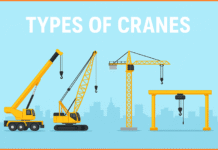Ergonomics in the workplace
Ergonomics, human factors or human engineering is the study of human characteristics for the appropriate design of the living and work environment. Human characteristics include capabilities, limitations, motivations, and desires. Hence, ergonomics is human-centered, trans-disciplinary and application-oriented science. Scientific principles, methods and a variety of data are used to develop systems more suitable to people and successful application is measured by improved productivity, efficiency, safety and acceptance of the resultant system design. The user-oriented design philosophy considers human variability as a design parameter and incorporates built-in safeguards to avoid or reduce the impact of unpredictable human error.
Psychology, physiology, biomechanics, anthropology, science, and engineering are the main disciplines to be considered in ergonomics.
Work physiology takes into account the capacity for physical work and its energy cost, heart rate at work, matching people and their work, rating the perceived effort, work/rest cycle, and fatigue.
Anthropometry measures the human body dimensions for work and biomechanics explains the strength of the human body in mechanical terms. It considers muscle strength and its method of working. It is this muscular strength which is mainly used in manual material lifting and handling.
For keys explained by Kroemer (1984) for ergonomics of manual handling are as follows:
- Improved facilities of good layout provide the safe and efficient material transfer.
- Job or task design should consider stress on the worker and should decide whether to assign certain tasks to a person or a machine.
- Selection, use, and improvement of equipment, machines, and tools strongly affect material handling requirements. Space requirement, control device, visibility, color, and sign coding, etc. should be considered.
- The system must be designed for people as they are kingpins of material handling. Their body size, strength, and energy capability should be considered.
These four keys provide a systematic analysis of material handling problems and many of the risk and strains can be avoided or reduced by intelligent job design, selection and use of the equipment and well-designed facilities.





